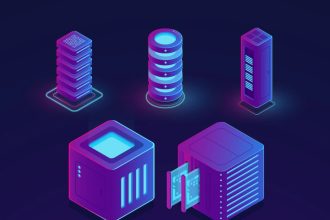Quantum computing is undergoing a revolution, and at its heart lies a groundbreaking innovation: photonic technology. This transformative approach is reshaping the quantum computing landscape, offering unprecedented advantages in scalability, efficiency, and practicality. As traditional quantum systems grapple with complex challenges, photonic technology emerges as a beacon of hope, pushing the boundaries of what quantum computers can achieve. To understand the impact of this revolution, we must explore the principles behind photonic quantum computing, its unique benefits, and the exciting applications it enables.
Understanding Photonic Quantum Computing
At its core, quantum computing relies on qubits—the quantum equivalent of classical computing bits. Unlike classical bits that can represent a 0 or 1, qubits can exist in a superposition of states, enabling them to perform complex calculations at unprecedented speeds. However, traditional qubits, such as those based on superconducting circuits or trapped ions, face significant challenges, including high susceptibility to decoherence and the need for ultra-low temperatures.
Photonic quantum computing offers a fundamentally different approach. In photonic systems, qubits are represented by photons, the fundamental particles of light. These photons can encode quantum information in their polarization, phase, or other properties, enabling highly stable and noise-resistant quantum operations. Furthermore, photonic systems often operate at room temperature, eliminating the need for the cryogenic cooling systems required by other quantum technologies.
The Advantages of Photonic Technology
1. Scalability
Scalability is one of the most critical factors in the development of practical quantum computers. Photonic technology excels in this area by leveraging integrated photonic chips. These chips combine multiple optical components, such as waveguides, beam splitters, and phase shifters, onto a single platform. This compact design allows for the creation of dense, scalable quantum circuits without requiring expansive physical setups.
2. Error Resilience
Error correction is a major challenge in quantum computing, as qubits are highly sensitive to noise and interference. Photonic qubits, however, are inherently less prone to decoherence, thanks to their minimal interaction with the environment. This stability reduces the overhead required for error correction, making photonic quantum systems more efficient.
3. Energy Efficiency
Traditional quantum computers often consume significant amounts of energy due to their reliance on cryogenic cooling systems. Photonic systems, on the other hand, operate at room temperature, drastically reducing their energy consumption and operational costs. This energy efficiency is a critical factor in enabling the widespread adoption of quantum technology.
4. Ease of Integration
Photonic technology seamlessly integrates with existing fiber-optic communication networks, enabling the development of quantum communication systems and distributed quantum computing architectures. This compatibility positions photonic systems as a key enabler of the quantum internet, where quantum devices are interconnected across vast distances.
Key Innovations Driving the Photonic Revolution
The rapid advancement of photonic quantum computing is fueled by a series of groundbreaking innovations:
- Single-Photon Sources: High-quality single-photon sources are essential for reliable quantum operations. Recent developments in quantum dot technology and parametric down-conversion techniques have significantly improved the generation of indistinguishable photons.
- Integrated Photonic Chips: The integration of photonic components onto a single chip is a game-changer for scalability. Advances in fabrication techniques are enabling the creation of chips with thousands of optical elements, paving the way for large-scale quantum processors.
- Quantum Memory: Storing quantum information is a critical aspect of building functional quantum systems. Innovations in quantum memory, such as those based on atomic systems or rare-earth-ion-doped crystals, are enhancing the capabilities of photonic quantum computers.
- Photon-Photon Interactions: Efficient interactions between photons are essential for quantum gates and entanglement. Techniques like nonlinear optics and cavity quantum electrodynamics are making these interactions more practical and reliable.
Applications of Photonic Quantum Computing
The versatility and scalability of photonic technology unlock a wide range of applications across industries:
1. Cryptography and Cybersecurity
Quantum key distribution (QKD) is a cornerstone of quantum cryptography, providing unparalleled security for communication systems. Photonic systems are well-suited for QKD, as they can leverage existing fiber-optic infrastructure to transmit quantum keys over long distances. This capability has significant implications for securing sensitive data in industries such as finance, healthcare, and government.
2. Drug Discovery and Healthcare
Photonic quantum computers excel at simulating complex molecular interactions, enabling researchers to identify new drug candidates more efficiently. By accelerating the drug discovery process, these systems have the potential to revolutionize the pharmaceutical industry and improve healthcare outcomes.
3. Optimization and Logistics
Many industries face optimization problems, such as supply chain management, traffic flow analysis, and resource allocation. Photonic quantum computers can process these complex problems exponentially faster than classical systems, leading to more efficient solutions and cost savings.
4. Artificial Intelligence and Machine Learning
Machine learning algorithms require significant computational resources for training and inference. Photonic quantum computers, with their parallel processing capabilities, can accelerate these tasks, enabling the development of more advanced AI systems.
5. Climate Modeling and Environmental Science
Accurate climate modeling requires simulating complex systems with countless variables. Photonic quantum computers can perform these simulations more effectively, helping researchers develop strategies to combat climate change and protect the environment.
Overcoming Challenges in Photonic Quantum Computing
Despite its advantages, photonic quantum computing is not without challenges. Efficiently generating and detecting single photons, ensuring precise alignment of optical components, and integrating quantum memory are areas that require ongoing research and development. Collaboration between academia, industry, and government is essential to address these challenges and drive progress.
Moreover, scaling photonic systems to millions of qubits—the threshold for solving real-world problems—requires further innovation in fabrication techniques and system design. Companies like Quantum Source are at the forefront of tackling these issues, pioneering solutions that bridge the gap between theoretical potential and practical implementation.
The Future of Photonic Quantum Computing
The photonic revolution in quantum computing is still in its early stages, but its impact is already profound. As technology continues to advance, photonic systems are expected to play a central role in the development of large-scale, fault-tolerant quantum computers. These systems will unlock new possibilities in science, technology, and industry, transforming the way we solve problems and understand the world around us.
Conclusion
The photonic revolution in quantum computing represents a paradigm shift in how we approach computational challenges. By harnessing the unique properties of photons, photonic technology offers a scalable, efficient, and practical path to realizing the full potential of quantum computing. From cryptography to climate modeling, the applications of this transformative technology are boundless, promising a future where quantum computing is not just a theoretical possibility but a tangible reality.
As the field continues to evolve, the collaborative efforts of researchers, engineers, and policymakers will be instrumental in driving the photonic revolution forward. Together, they are building a foundation for a quantum-powered future that will redefine the limits of what we can achieve.














